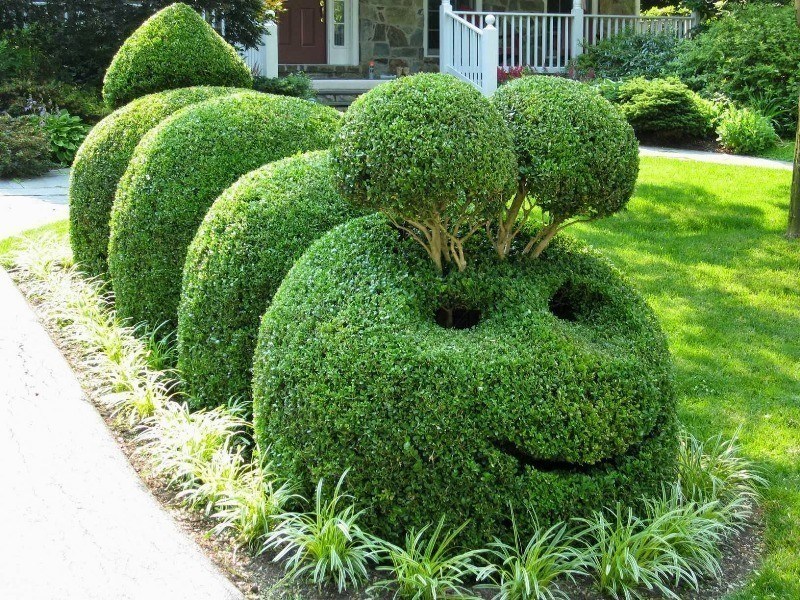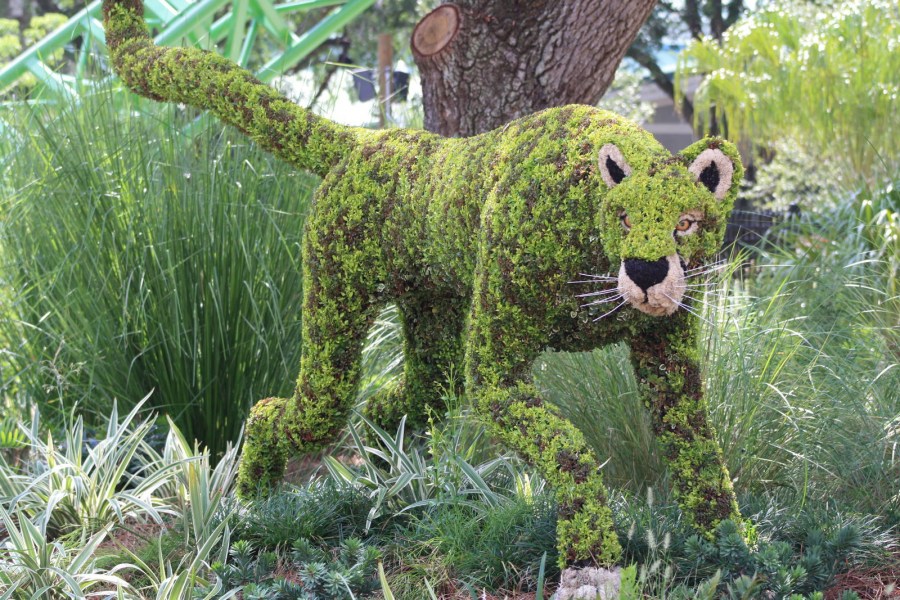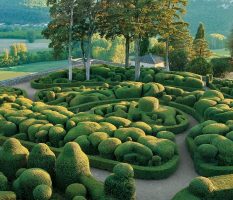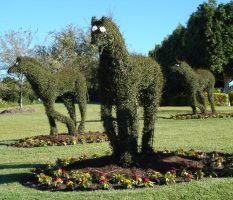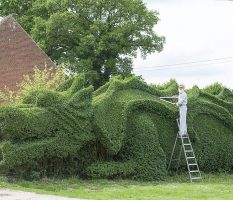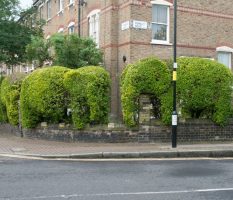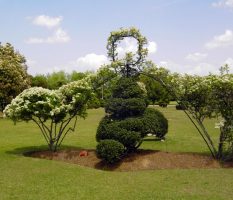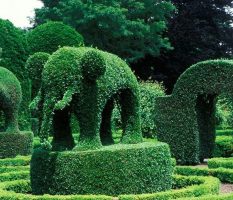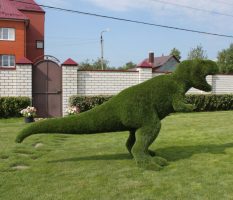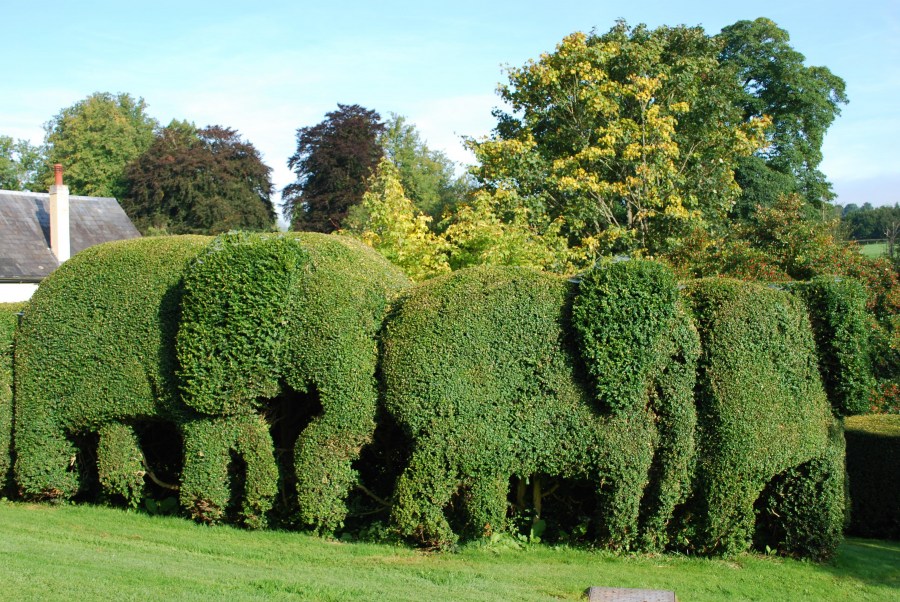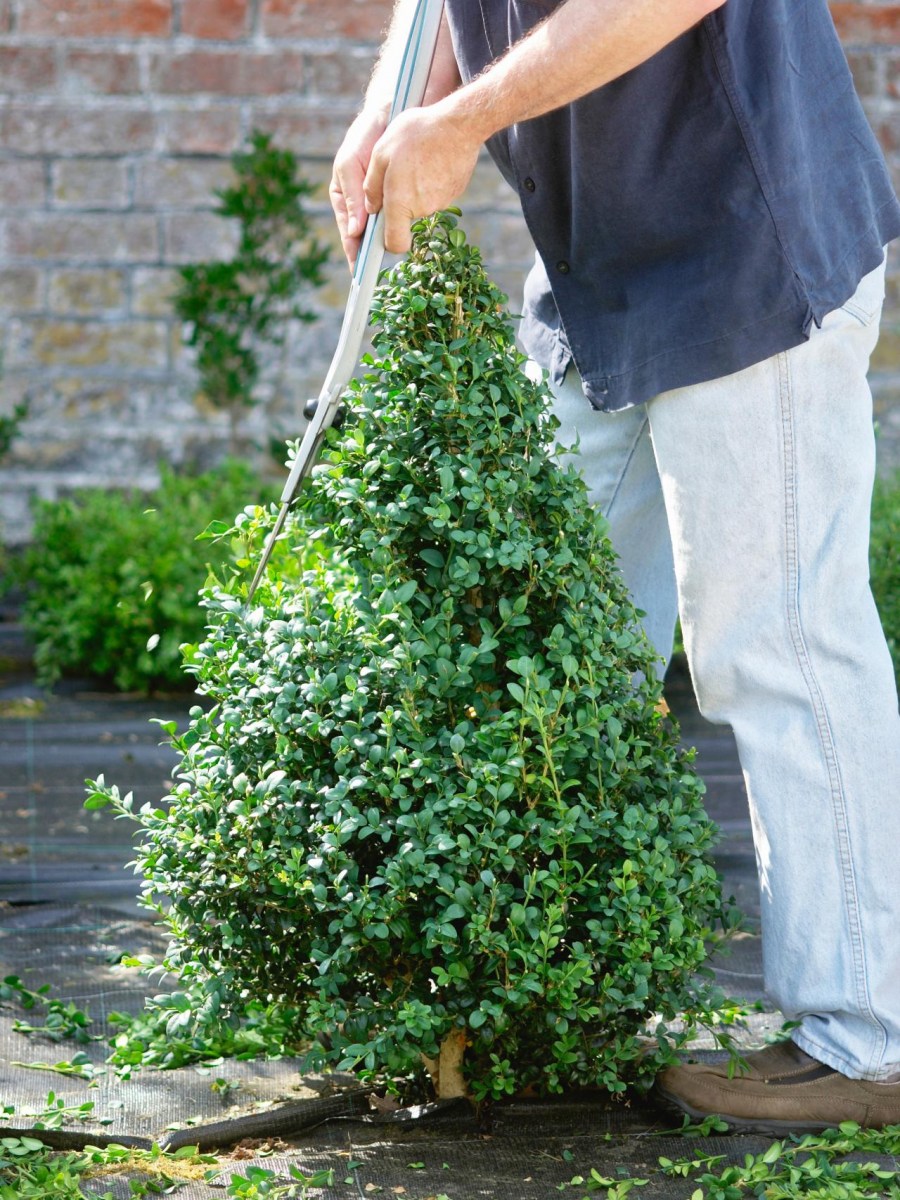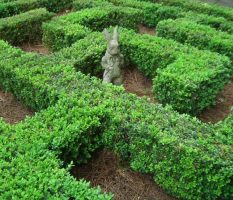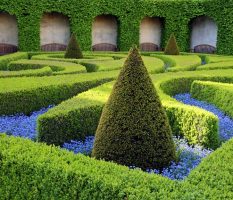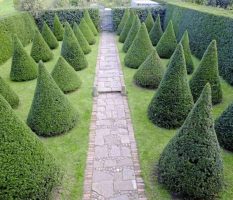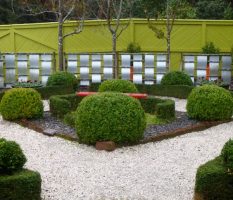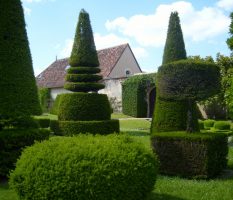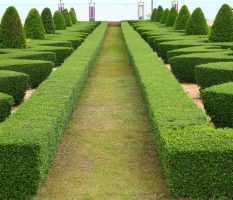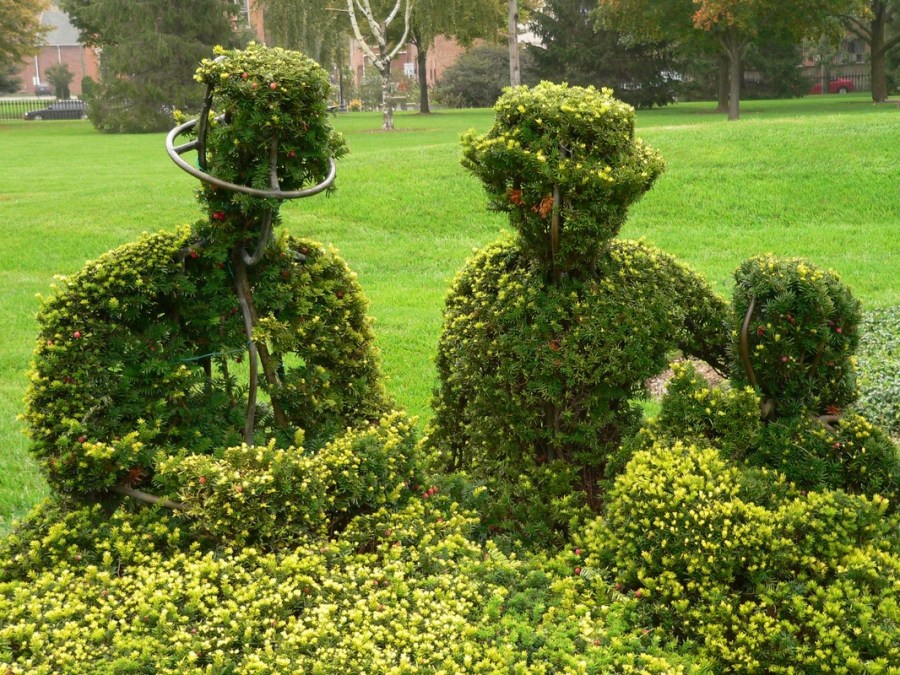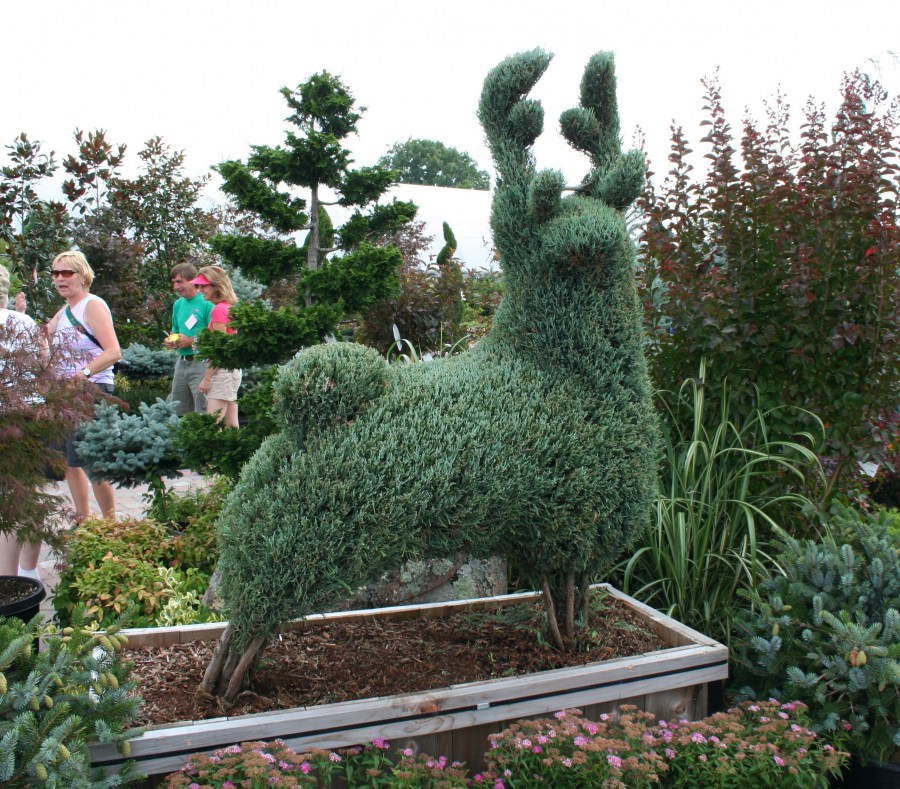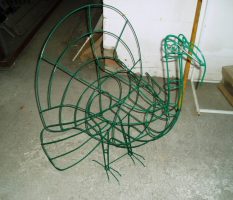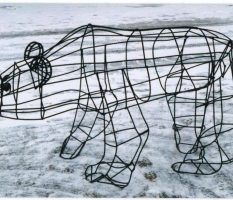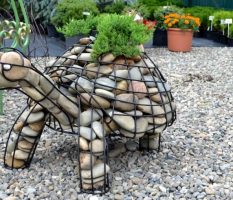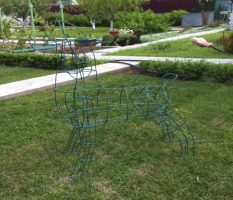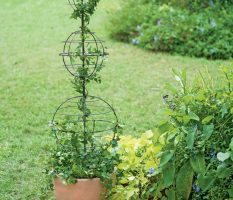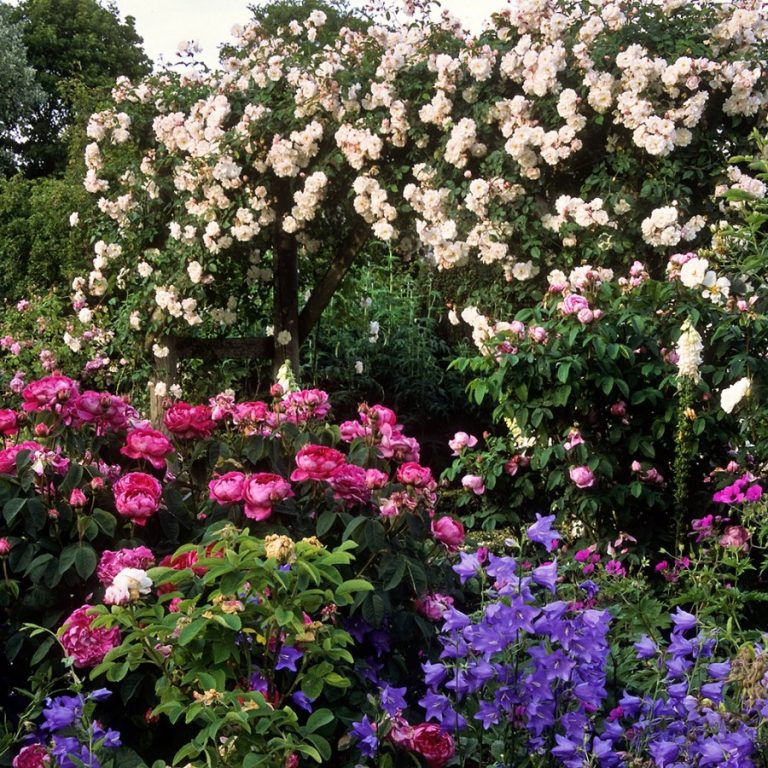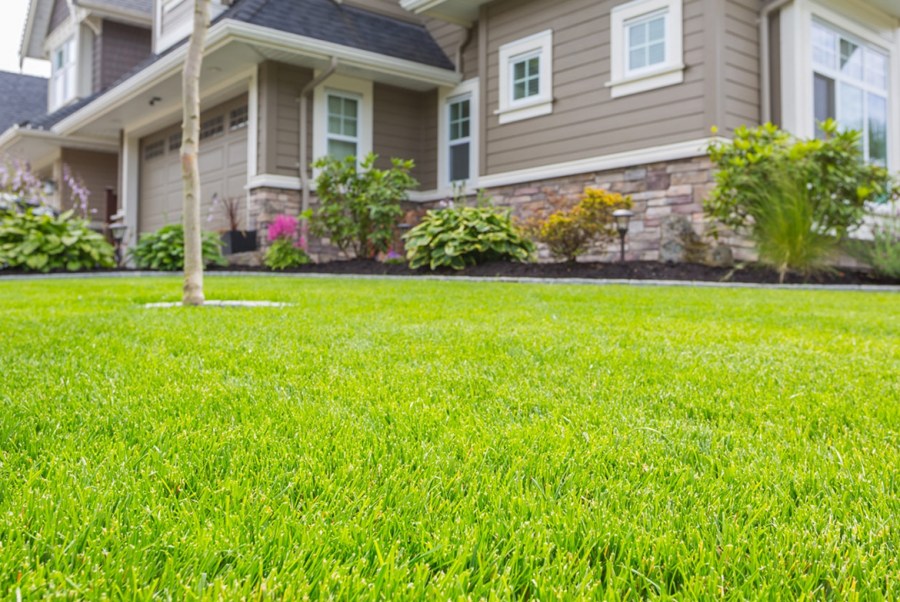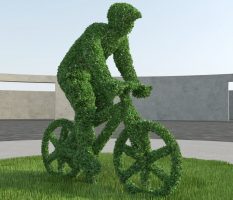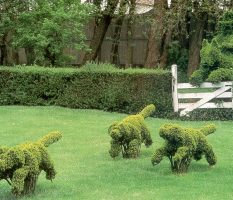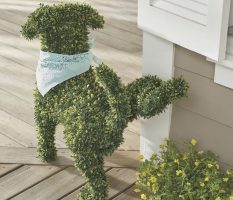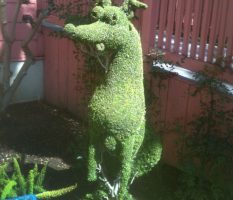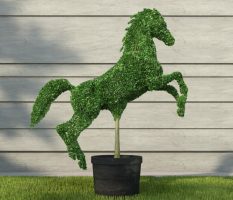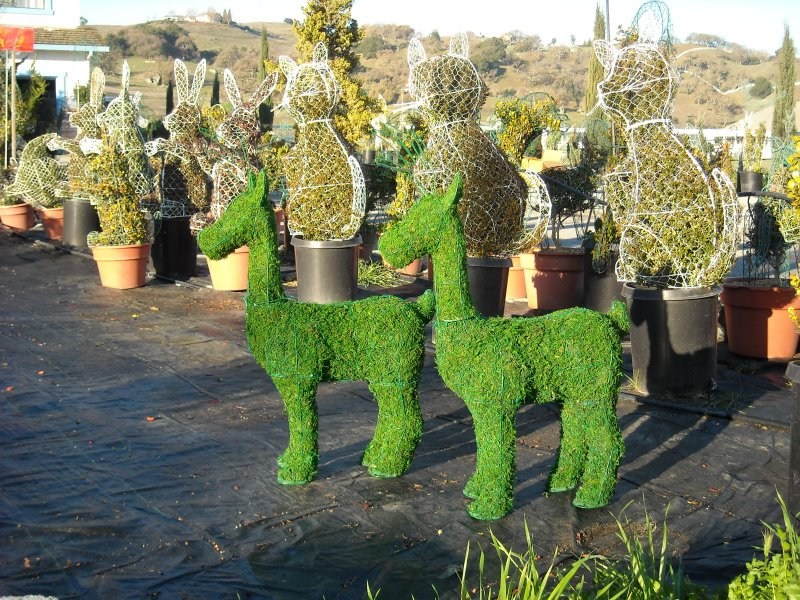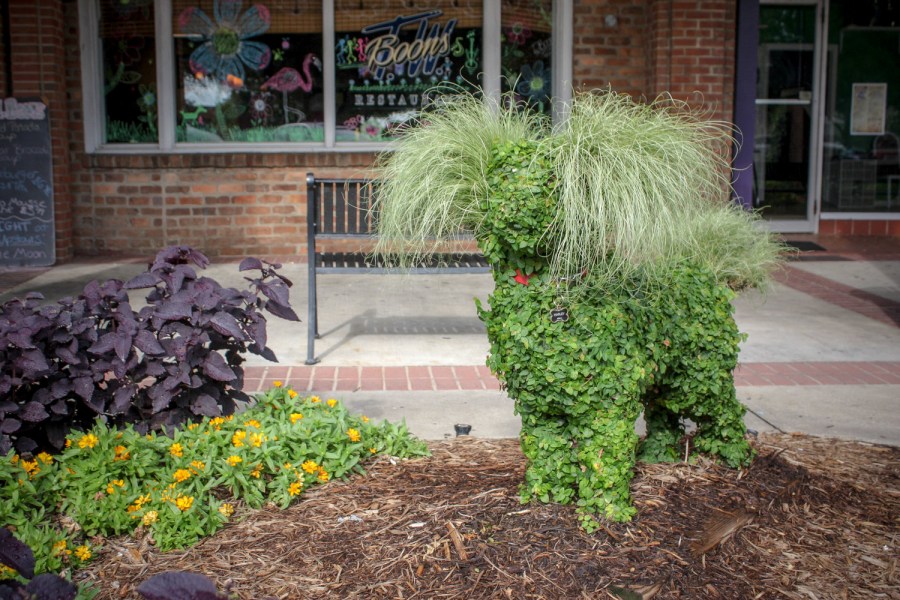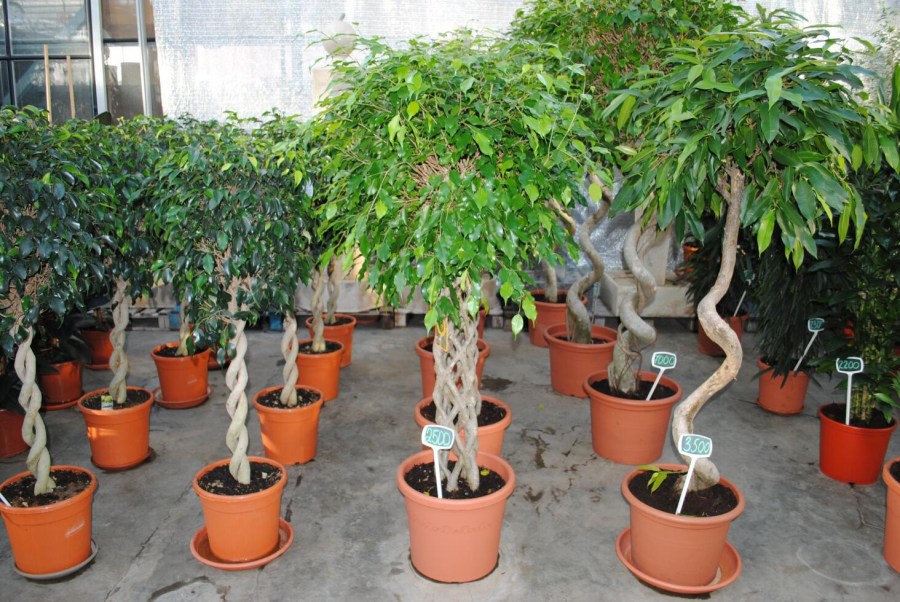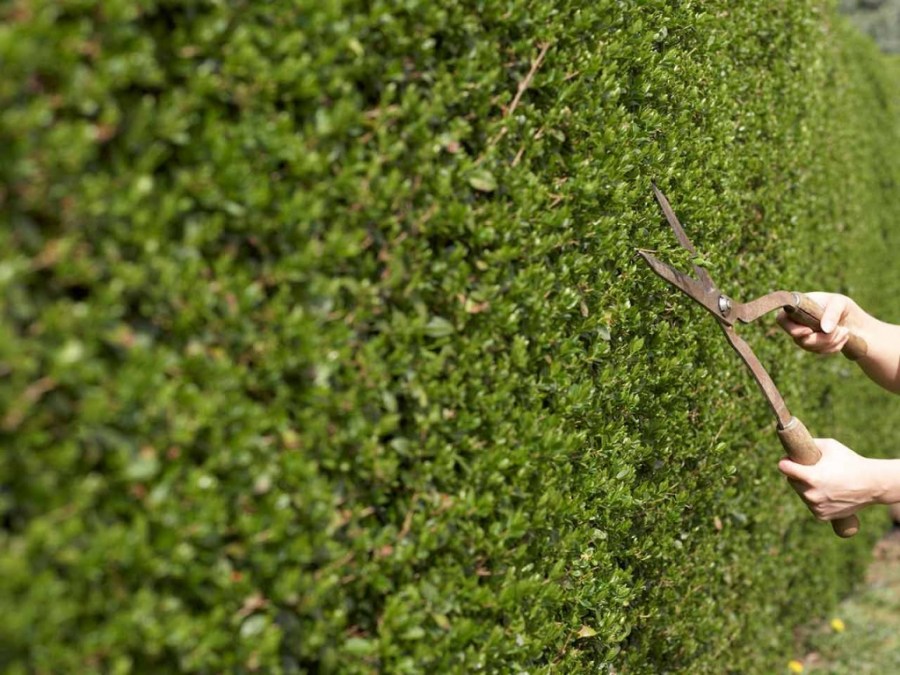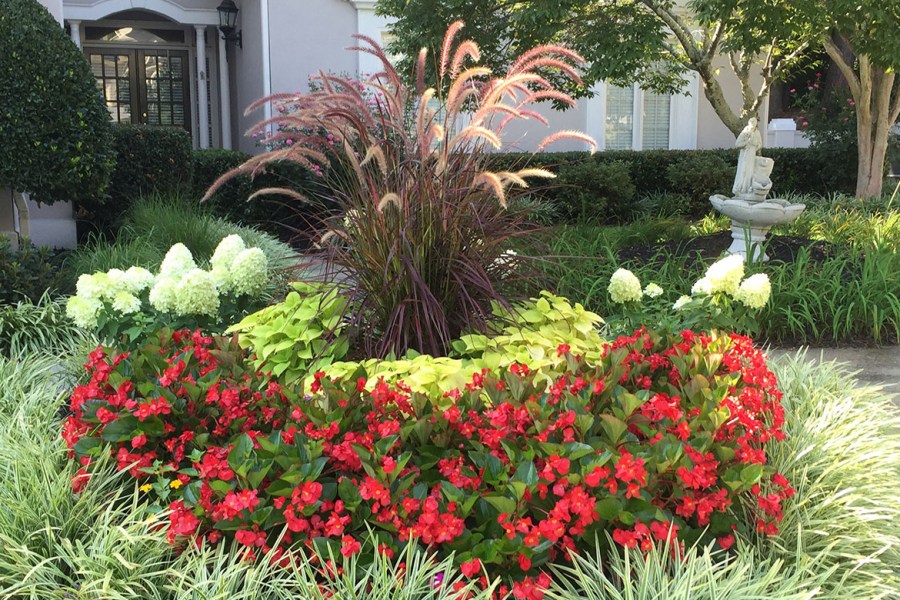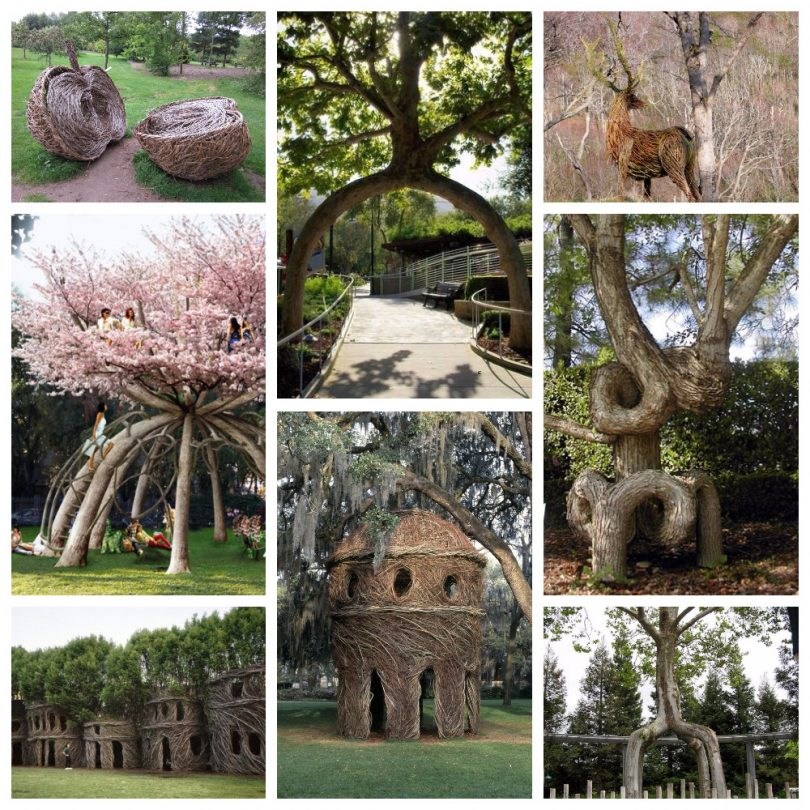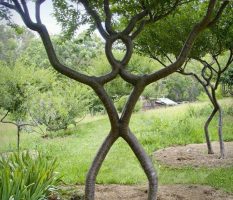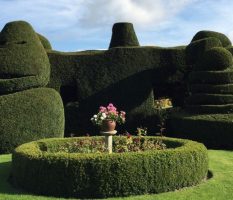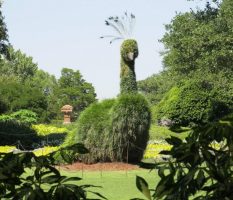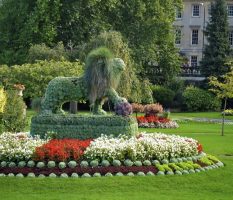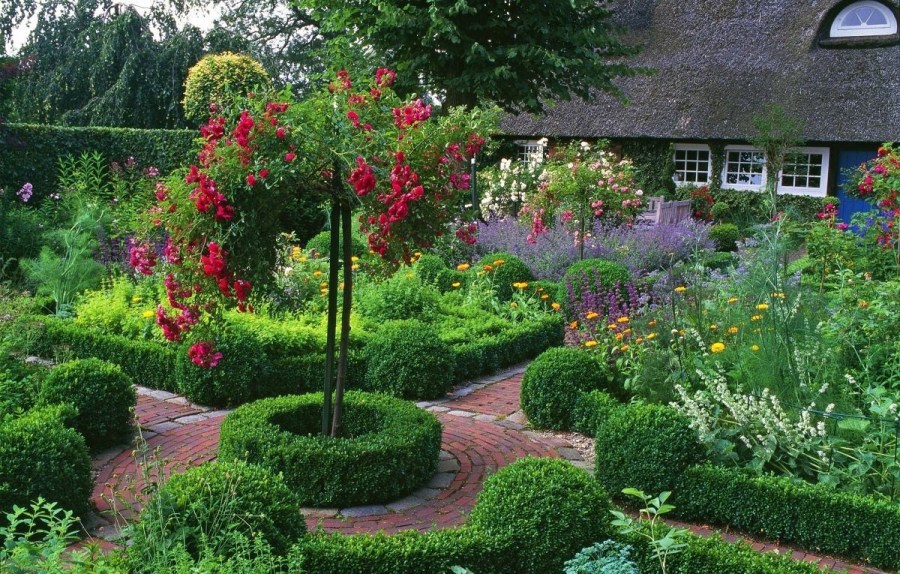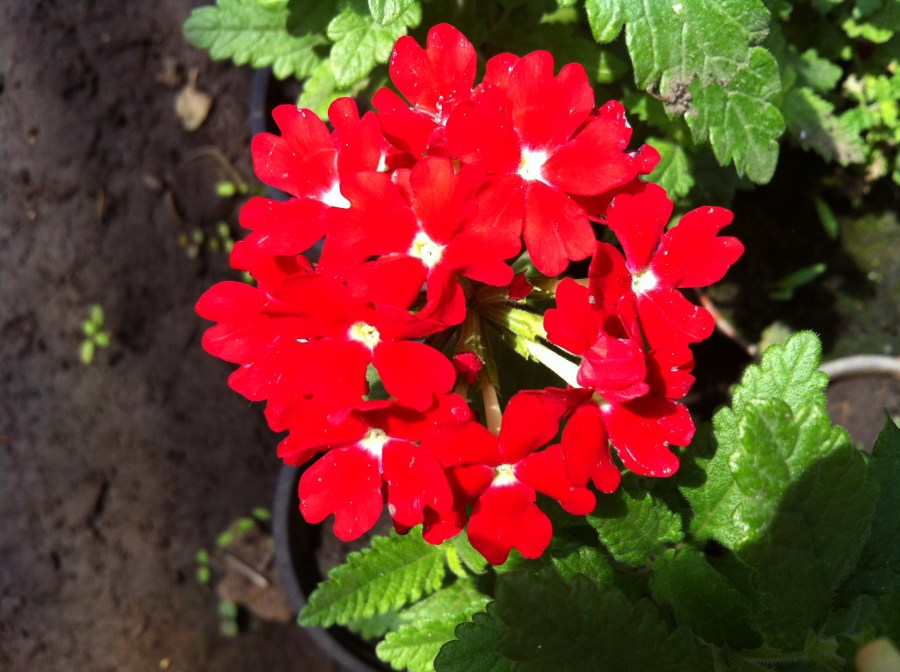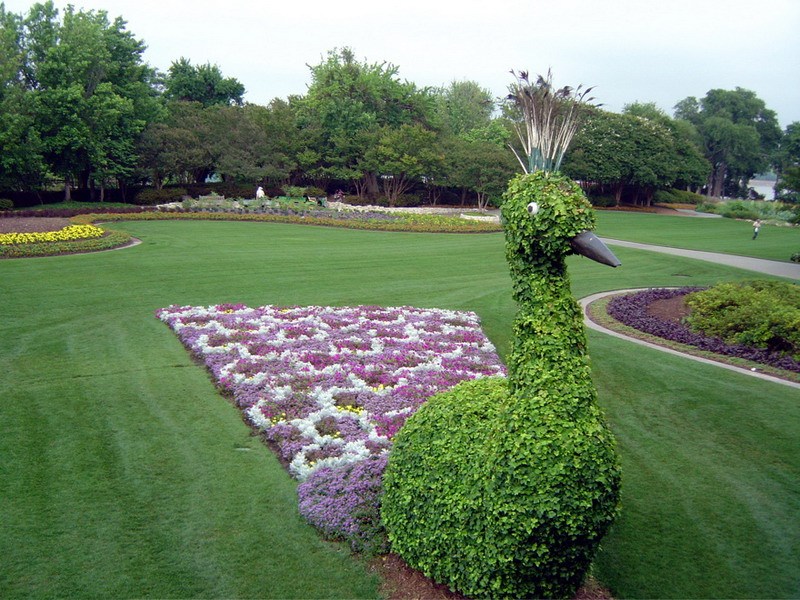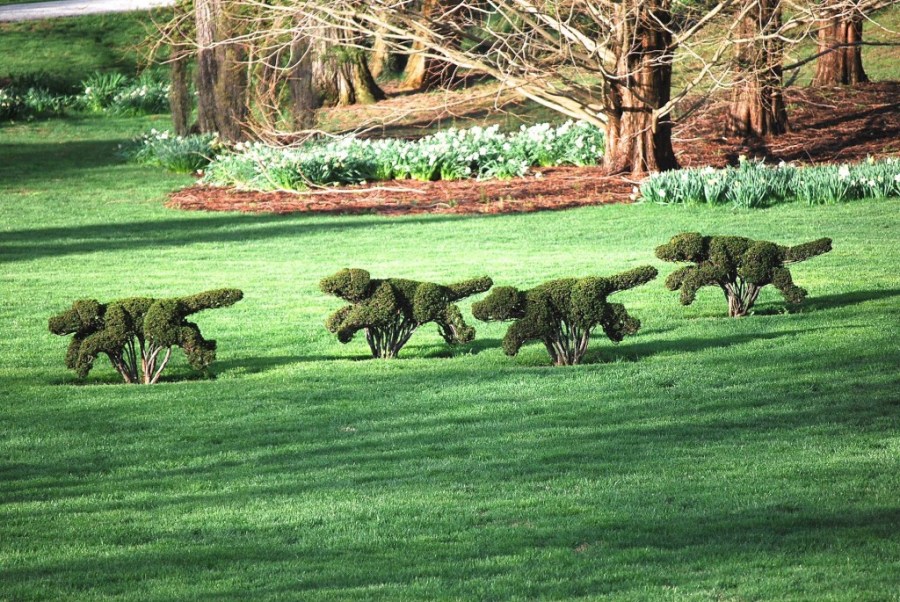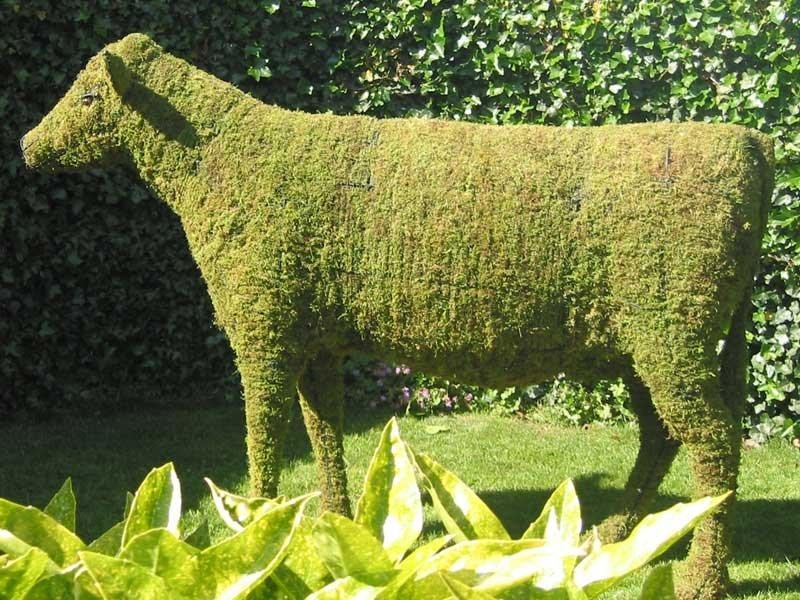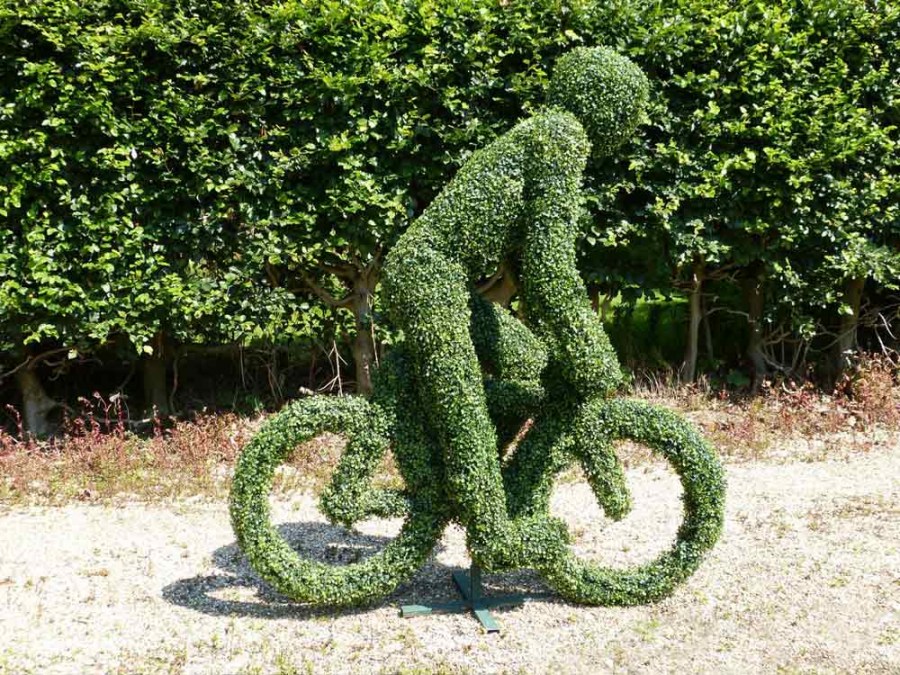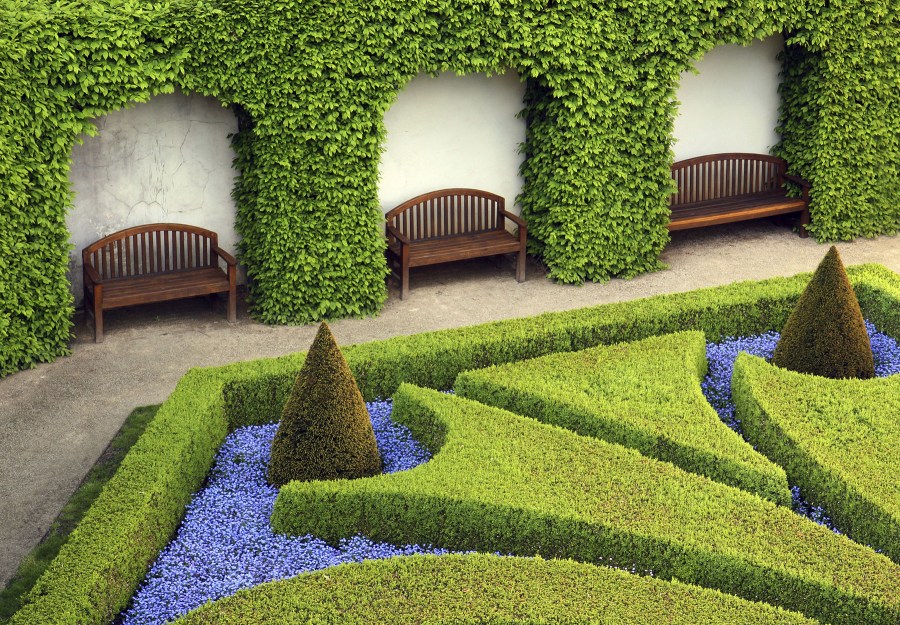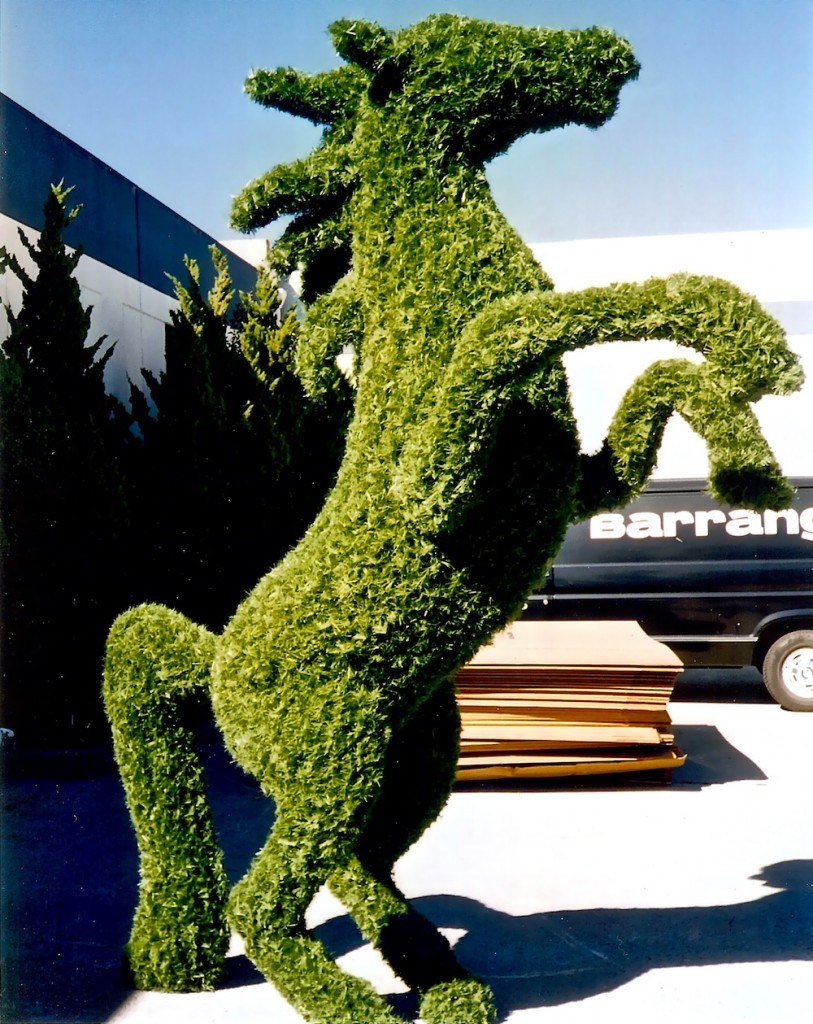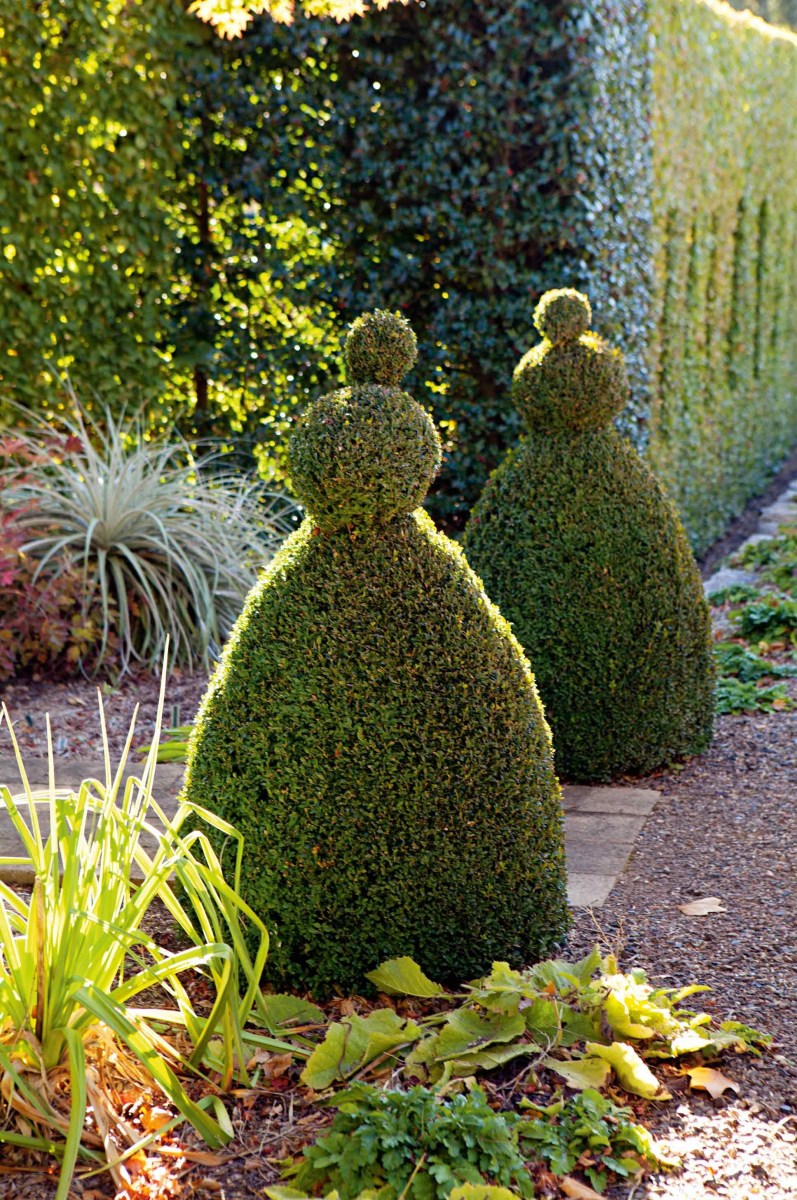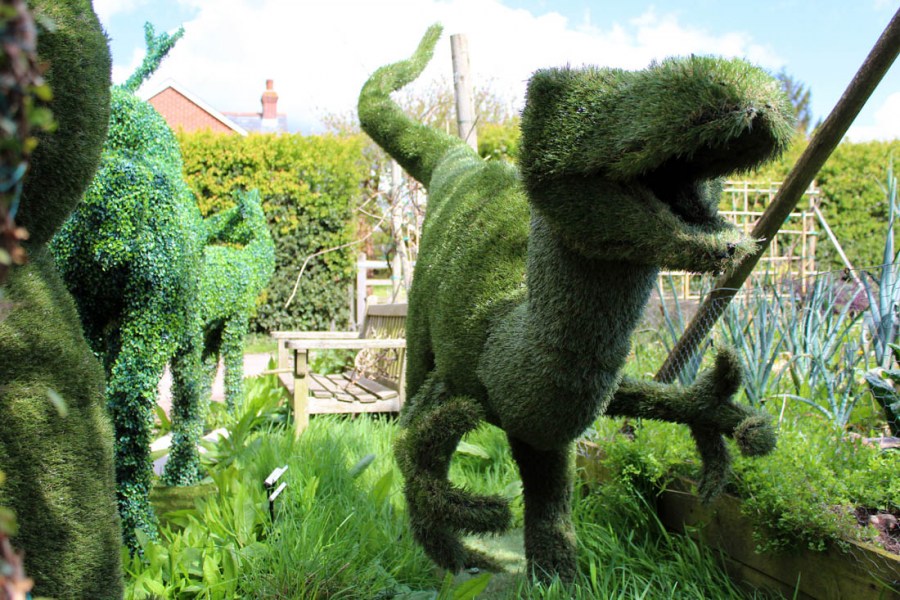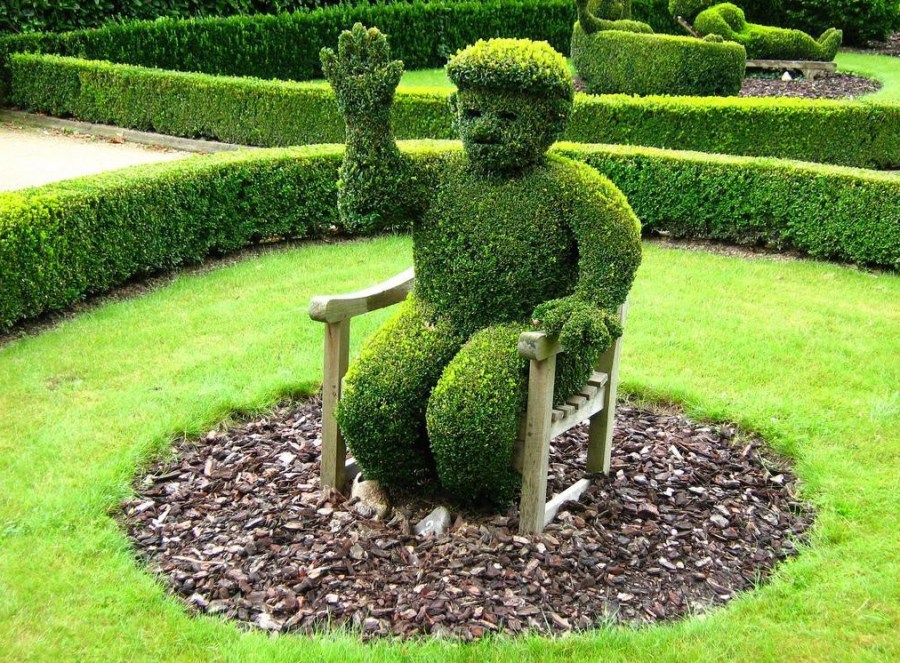Topiary: master class and instructions for curly shrubbery (70 photos)
To decorate public parks and territories of private residential buildings, designers sometimes use interesting green sculptures - figures of topiary. Usually this word means curly bushes. Often figures are created by experienced gardeners for more than one year.
Topiary art appeared in ancient Rome, where unusual figures adorned the gardens of the richest people. Entire schools of gardeners appeared who knew the secrets of curly-cutting plants. With the spread of the influence of Rome, topiary art went farther, plant sculptures appeared outside the Roman Empire.
The fashion for green sculptures came to Russia from France during the reign of Peter I. Since then, the topiary has been gaining more and more popularity with its elegance and outward nobility.
Technicians
To create figures from plants, several techniques are used that differ in the technique of forming the shape of the plant:
- Classic
- Wireframe
- Wireframe with filler
- Climbing Topiary
- Arbosculpture
The classical or traditional method has been used for several thousand years and has not undergone fundamental changes. It consists in curly cropping of adult plant bushes.
For beginners in gardening, it is best to start learning from the formation of simple geometric shapes - balls, cubes, cylinders. Creating complex figures of people or animals is hard work that can take more than 5 years.
At the same time, with incorrect pruning, you can not only spoil the appearance of the plant, but also completely destroy it, so it is better to entrust such a matter to professionals.
Only plants with small leaves or needles are suitable for such pruning. The plant should be frost-resistant and not have a tendency to grow rapidly. It is best to use yew, olive, barberry, thuja, cypress or spruce.
To form a figure, you must have a required set of tools:
- Brush cutter
- Gardening scissors
- Garden saw
- Height cutter
- Stirrup
- Wooden slats and guide ropes
- Paint or chalk for marking outlines
Keep an eye on the condition of your cutting tools - their edges should be perfectly sharp, the only way to achieve smooth plant shapes. The formation of crowns is best done in late winter or early spring.
Frame technology is to limit the growth of plants using a special metal frame. Usually the wire form is "worn" on a young, growing shrub. The branches of the plant begin to fill the form, acquiring the desired shape.
Shearing such a figure is only required if the shoots go beyond the frame. After the plant is fully formed, the wire form can be removed and reused.
Plants grown in this technique do not differ at all from classical topiary, but require much less energy for their design.
You can buy a frame for topiary in special large stores, or you can create it yourself.
To create a large street sculpture, it is necessary to purchase a steel wire with a cross section of 6-7 mm. You can fasten the components of the frame with a thin wire or use welding. The finished frame must be braided with a wire mesh with cells no more than 1 cm.
To make a small frame, you can use a thin wire, which braids an object of the desired shape (ball, big soft toy, animal figure). After you need to carefully cut the wire and remove the frame made.
Weeping willow, pinnatifolia, common juniper and alpine currant are well suited for this technique.
A variety of frame technology is a frame technique using filler. To create such a topiary in the garden with your own hands is the simplest and easiest option, not inferior to the beauty of other types of processing plants.
For this technology, a factory or home-made frame is also used, which is filled with a home-made substrate or specially purchased soil for your chosen plants. Perennial or annual flowers are planted on this substrate. Such a product is more of a bulky flower bed than a topiary.
To make a substrate for planting plants, it is necessary to mix the nutrient mixture and soil, which includes sheet soil, turf and the top peat layer. Straw is added to the mixture to prevent it from spilling out through the structural cells.
Also, instead of peat, you can fill the frame with moss - sphagnum. That's all the work with the figure is over - the moss will quickly fill the entire space of the figure in the process of growth and close the frame.
Making topiary from a climbing plant is also easy. An established metal form is used here, any climbing plants that quickly braid a figure (ivy, morning glory, dichondra). Unfortunately, in our harsh climate, such figures are short-lived and can only please owners for one season.
Arbosculpture can be ranked as a green figure, however, it differs radically from previous examples in manufacturing technology. In this case, manipulations are made not with the crown of the plant, but with its trunk. Photos of these topiary are simply amazing. From the trees create furniture, patterns, real sculptures.
Arbosculpture is a very complex design technique. The design of one plant can take up to 10 years of painstaking work. It uses plants that can grow together and quickly grow the wood layer (willow, maple, apple tree, cherry, hornbeam, cherry and birch).
Arbosculpture is based on the ability of tree branches to grow together. This effect can be achieved by tightly joining young, flexible trunks of seedlings, interlacing shoots and inoculating new shoots to the plant. To maintain the desired shape, the branches are tightly fixed with rubber bands or thin wire.
The main thing is to ensure that the screeds do not damage the tree bark and do not grow into the wood. For the manufacture of "living furniture" you can even use self-tapping screws for a more tight junction of branches to each other.
Care
Topiary sculptures are very demanding in care. They do not tolerate shady places for planting and require frequent mineral top dressing.
Watering plants should be carried out at least 2 times a week, while drip irrigation can be organized for frame sculptures with filler.
When pruning plants, it is necessary to move from top to bottom, leaving 3-4 buds on each branch. Otherwise, the plant will quickly fade.
In winter, plants urgently need shelter - temperatures below 5 degrees Celsius can destroy the fruit of many years of effort. It is best to sprinkle abundantly around the trunk with large sawdust and wrap the crown and trunk with several layers of matting.
Output
Topiary art is not always as complex and time-consuming as it seems at first glance. A little imagination and free time will help you create an unusual, beautiful garden plot.
Topiary Photos
DIY fireplace design - 90 photos of 2019 ideas on how to make a fireplace frame
Entrance to the site: 95 photos of the correct construction of a reliable access road
Drinking bowl for chickens: 85 photos and step-by-step instructions for building
Join the discussion:
